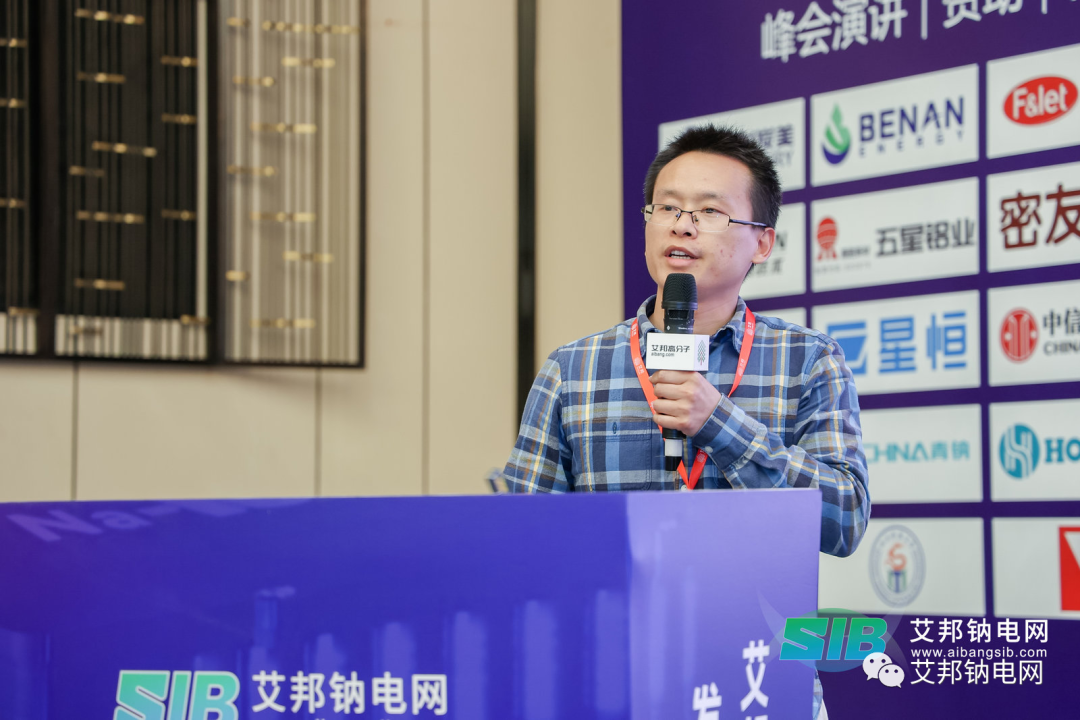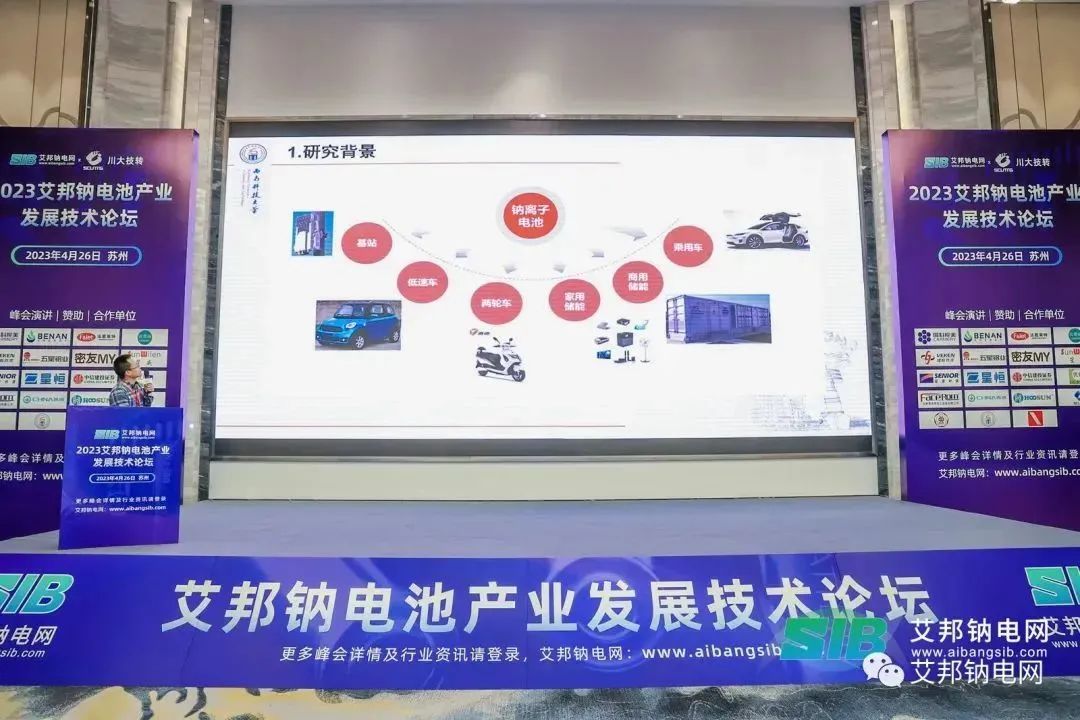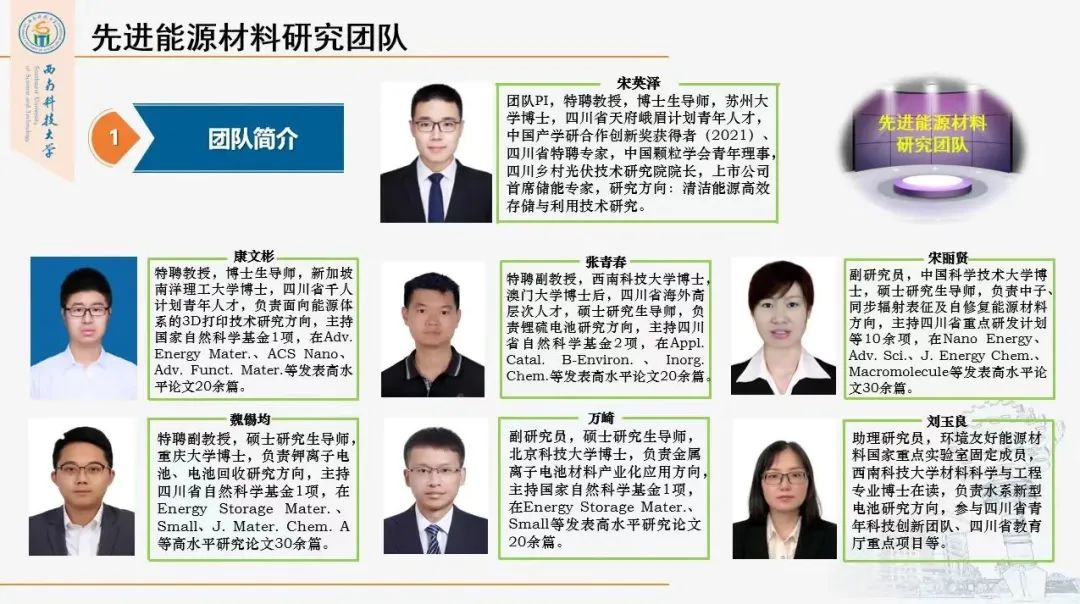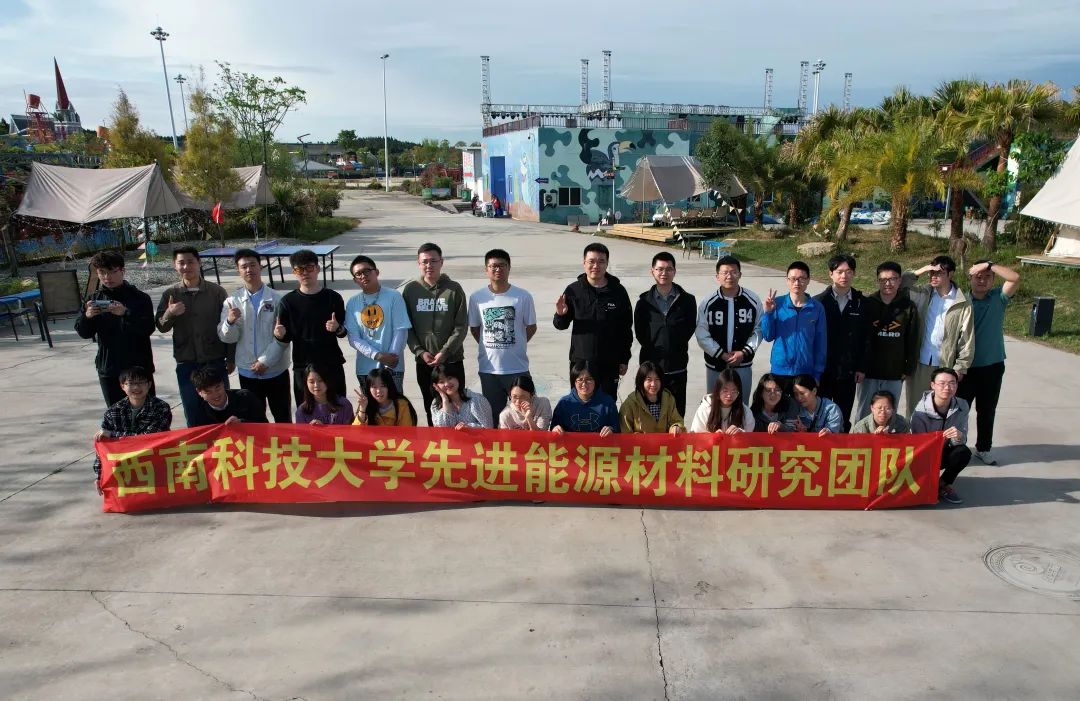

April 26th. Southwest University of Science and Technology was invited to participate in the 2023 sodium battery industry development technology forum, and Associate Professor Wan Qi published "Research progress of hard carbon negative electrode of sodium ion battery". At the meeting, Associate Professor Wan Qi of Southwest University of Science and Technology first introduced the advantages, market demand and research status of hard carbon anode materials for sodium ion batteries, then introduced the sodium storage mechanism of hard carbon, and finally introduced the team's work on hard carbon anode materials, from basic research to large-scale preparation.
I. Advantages of Sodium Ion Battery
The anode materials of sodium ion batteries are mainly soft carbon, hard carbon, transition metal compounds and organic compounds. Because hard carbon materials have many advantages such as high specific capacity of sodium storage, low voltage of sodium storage and good cycle performance, the industrialization of hard carbon has made rapid progress. Hard carbon also has some disadvantages, such as low electrode potential, first-cycle coulombic efficiency and poor cycle stability and rate.
First of all, from the background, sodium ion batteries are more used in base stations, low-speed vehicles, two-wheeled vehicles, household energy storage, commercial energy storage and passenger cars. In the past, people did not pay much attention to it, mainly because of its low energy density.
Since 2010, the corresponding patents and academic papers on sodium ion batteries have increased rapidly, indicating that academic and industrial attention has gradually increased. The lack of lithium resources leads to the new favorite of sodium ion battery, which has a good cost advantage. Last year, the price of lithium carbonate rose rapidly, which made the advantages of sodium ion batteries stand out. In the long run, the price of lithium carbonate will show a fluctuating growth trend, so sodium ion batteries will have a cost advantage.

Why study sodium ion batteries? First, the resources are abundant; second, aluminum foil can be used for the anode and cathode of the current collector (aluminum foil is cheap), thus achieving the effect of cost reduction; and third, the current collector has good temperature and safety.
Second, the market demand of sodium ion batteries
According to the data of Northeast Securities, regarding the downstream demand and application of sodium ion batteries, the application fields of two-wheeled battery trains include Huayu New Energy, Mavericks Electric, Emma Technology and Funeng Technology. Electric vehicle applications, including Funeng Technology, Chuanyi Technology, Contemporary Amperex Technology Co., Limited, etc. The application fields of energy storage include Three Gorges Energy and Chuanyi Technology. According to the data of Chuancai Securities Research Institute, A00 small electric vehicles broke out in 2021, with sales of 900,000 vehicles, a year-on-year increase of more than 2 times. In 2022, it exceeded 1 million vehicles, reaching 1.386 million vehicles, a year-on-year increase of 54.13%. A0 small-sized electric vehicles sold 373,300 vehicles in 2021, a year-on-year increase of 2 times, and the sales volume in 2022 was close to 1 million vehicles, a year-on-year increase of 150%. In 2022, the output of two-wheeled electric vehicles in China reached 67.5 million, a year-on-year increase of 15%. In 2022, the installed capacity of electrochemical energy storage in China was 3269.20 MW, up by 91.23% year-on-year, and increased by 12 times compared with 2016. China's White Paper on the Development of Sodium Ion Battery Industry (2023) predicts that the actual shipment of sodium ion batteries will reach 347.0GWh by 2030.
Third, the mechanism of hard carbon sodium storage in sodium ion batteries
The composition of sodium ion battery, including positive electrode, negative electrode, diaphragm, electrolyte, etc., should be well matched with each other in order to achieve good battery performance. The cathode materials include layered oxide, polyanion, Prussian blue, etc. The negative electrode has alloys and carbon-based materials. Why choose hard carbon as the negative electrode? First, because of its wide sources, and second, because of thermodynamic factors. For example, metal oxides have volume expansion problems. However, graphite is not suitable for sodium storage due to thermodynamic problems, and soft carbon has low sodium storage capacity, and hard carbon has good comprehensive properties, which has become the mainstream. So how to distinguish soft carbon from hard carbon? Hydrogen-rich precursor carbonization products are generally soft carbon, and oxygen-rich precursor carbonization products are generally hard carbon. In terms of morphological characteristics, soft carbon is similar to graphite, and the spacing between soft carbon layers is larger, while hard carbon is messy.
The principle of hard carbon sodium storage, including adsorption, pseudo-adsorption, intercalation reaction and atomic cluster column, has not been unified yet. Because the mechanism is unclear, it is blind to develop materials.
Fourth, the research status of hard carbon negative electrode of sodium ion battery
As can be seen from this figure, hard carbon precursors are biomass, anthracite, resin, graphite, asphalt, anthracite and asphalt with the highest yield, relatively lower capacity and low cost; Resin and biomass have high capacity, but the yield is low.
According to the data compiled by the Institute of Economics and Finance of Industrial Securities, Cola Li has achieved mass production, and the product price is higher than 200,000 yuan/ton. Baisige has a production line of 2,000 tons/year, and plans to expand its production to 50,000 tons in 2025. Shengquan Group has laid out a 100,000-ton biomass hard carbon anode project, and its shipment has reached 100 kilograms. Yuanli Group promotes biomass hard carbon business. Betray currently has a production capacity of 400 tons and will expand to 10,000 tons in 2023. Shanshan shares can produce 1000 tons in 2024. Both soft and hard carbon of Zhongke Haina are laid out, with phenolic resin as the precursor for hard carbon and anthracite and asphalt as the precursors for soft carbon. There are already two production lines of positive and negative materials of 1,000 tons. Polyfluoride will be put into production in 2023 with a capacity of 2000 tons/year.
After investigation, it is found that many manufacturers use biomass as raw materials, and now coconut shells are the mainstream, and bamboo, straw and walnut shells are also used as raw materials in China. These biomass precursors have their own advantages and disadvantages.
As hard carbon precursors, fossil fuel asphalt and coal received less attention in the early stage. Because of its low cost, stable raw materials and rich sources, it has gradually attracted everyone's attention.
In a word, everyone pays special attention to biomass-based hard carbon, but the threshold is high, the yield is low, the compaction density is low, the raw materials are unstable and the source may be controlled by people in the future. Anthracite-based and pitch-based hard carbon have high yield, low cost, high compaction density and relatively low capacity.

Talking about my personal point of view, coal-based and pitch-based hard carbon may be a future direction, with acceptable product performance, stable raw materials and rich sources, which will not be controlled by people.
Different fields have different properties for hard carbon, and which precursor hard carbon can be recognized in the end needs market verification.
V. Research on hard carbon materials of sodium ion batteries
Our team mainly focuses on research and development and industrialization of coal-based and asphalt-based carbon, and at the same time develops some biomass hard carbon. Because the team has carried out 8 years of basic research and industrialization work on silicon anode, the core of silicon anode is carbon material, and at the same time, the team has technical reserves in carbon materials for supercapacitors, so we have learned a lot of valuable experience from silicon anode and carbon materials for supercapacitors in research and industrialization of hard carbon. At present, the team has made good progress in coal-based and asphalt-based hard carbon. The capacity is equivalent to that of biomass, and the rate and cycle life are very good, but the compaction density is higher than that of biomass, and we are still optimizing the performance.
Finally, let's talk about my personal feelings. I have talked to many large enterprises recently, and their feedback is that what is lacking now is not capital, but technology. Hard carbon is popular now, and everyone wants to enter, but I suggest you calm down and think clearly about whether to put into production or layout. Because a lot of foreign capital has come in, but they don't understand the new energy industry, it is easy to blindly invest and have problems.
VI. Research Team on Advanced Energy Materials of Southwest University of Science and Technology
The Advanced Energy Materials Research Team of Southwest University of Science and Technology was established in November 2021, and it belongs to the State Key Laboratory of Environment-friendly Energy Materials of Southwest University of Science and Technology, with Song Yingze and distinguished professor as PI. There are 7 fixed researchers with doctoral degrees, including 3 candidates for Sichuan Thousand Talents Program, 2 overseas high-level talents from Sichuan Province and nearly 30 doctoral and master students. Focusing on the key scientific problems in the development and application of new energy storage materials, the team carried out research on key scientific theories and technical methods of performance system optimization, and achieved a series of innovative scientific and technological achievements; Two achievement transformation platforms were jointly built. The top journals in the field are Energy Environ. Sci., Adv. Mater., Adv. Energy Mater., Adv. Function. Mater., Adv. Sci., Energy Storage Mater., ACS Nano, Nano Energy, Small, J. Energy Chem. and Nano Res have published more than 100 high-level research papers, and have received more than 8 million yuan of vertical and horizontal research funding from the National Natural Science Foundation, and won the "China Industry-University-Research Cooperative Innovation Award (2021)" from the Industry-University-Research Promotion Association of China, the Youth Civilization of Southwest University of Science and Technology (2022), and cooperated with Peking University, Sichuan University, Suzhou University, China University of Science and Technology, China Academy of Engineering Physics, and others.

